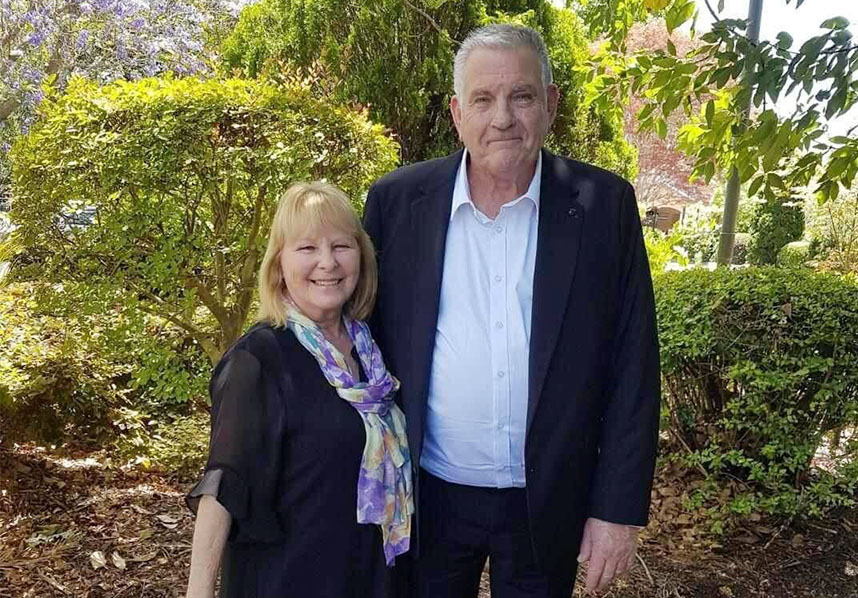How to Buy and Sell at the Same Time

How to Buy and Sell at the Same Time
So, you want to buy a new home, but you need to sell yours to fund the purchase? How do you do it? How do you buy and sell at the same time? Unless you are fortunate enough to have enough liquid funds to purchase your new home without needing to sell yours, it’s a question that nearly every homeowner in Australia asks at some stage. Maybe you want to upsize to a bigger home, or downsize to somewhere smaller, or simply relocate, usually you will need the equity tied up in your current home to make the purchase of your new home possible.
So how is it done? In a nutshell, there are only five ways to go about this, all have their positives and negatives, and certain ways will work better in some situations, but not others.
The five ways to go about this are:

Purchase your new home with a Subject to Sale Clause
This is just what it sounds like, you go out looking for a house you like, when you find one, you make your offer to purchase “subject to the sale of your home”. In one way this is the easiest and most risk-free way of going about the process, you don’t have to worry about moving until you have already secured your next home and have then sold your current home to fulfil the contract.
However, this method comes with some major flaws, the main one being that unless you are in a very stagnant or possibly rural real estate market, you are very unlikely to actually secure your next home with this major detraction attached to your offer. Look at it like this, if you were selling your home right now, and there were three offers on the table, all at roughly the same price, the one that is subject to sale would be your last preference. So, unless your subject to sale offer is significantly higher than other offers, you are likely to keep missing out on properties you like. Furthermore, this method can also put pressure on your sale, as you will have certain deadlines by which your sale needs to be achieved. This method also requires “simultaneous settlement” which means moving out of your old home, cleaning it, then moving into your new home, all on the same day! Not to mention the frustration that can arise with settlement date changes, when it requires changing dates on 2 different sales and getting everything to line up perfectly. These flaws don’t necessarily make this way a non-option, but it is the method that is least likely to secure the outcome you want.
Purchase with Bridging Finance
This method offers many benefits to solve the buying and selling problem, as with the above method it allows you to find your next home first, then secure it with normal bank finance, so your offer won’t be disadvantaged versus other buyers and you can even go and buy at auction. A nutshell explanation of this method is as follows; a bank mortgages against the equity in your current home and against the value in your new home, you pay mortgage payments on the total borrowing amount, so basically a higher mortgage amount until such time as you sell your old home.
The obvious drawback here is the financial cost of this increased mortgage amount. Furthermore, this method financially doesn’t suit everyone. If you are at the beginning or middle of your working life and have a high enough income to support this then it might be the perfect option for you, whereas if you are retired or near the end of your working life then it might be either not possible due to lending criteria or just an unpalatable option. On the plus side, it does have the advantage of not needing “simultaneous settlement” which is required on the above subject to sale option. As with any financial advice we recommend discussing with a financial professional to assess whether this option is right for you and your individual circumstances.

Sell first with a longer settlement
This option is actually one of the most risk free, simplest to do, and is actually what the vast majority of people end up doing (usually after trying subject to sale and discovering how difficult that is). The key benefits here are that you will have already sold so you know exactly how much funds you have to play with, you won’t have to move twice, and you could possibly be a “cash buyer” on the buying side. It works quite simply, you push for a 90 day settlement as a term of your sale, there is a risk that some buyers may need a shorter settlement, but I can say truthfully as an agent I have had well over a hundred clients ask me to secure them a 90 day settlement, and I have achieved their goal on every single occasion.
The main issue people have with this method is the fear of the unknown, no one likes the idea of selling before you know where you are moving. Which is human nature really, no one likes the risk of being homeless, jumping into the unknown is a bit unnerving. However, I can say from extensive experience that it doesn’t take three months to find a property to buy. Conversely, due to their sale creating certainty around how much funds they have to buy with, in nearly all cases, clients have secured a new home within two to three weeks and 90 days ends up being way too long! If you are currently going around looking at homes to buy without having sold yours and are finding deciding what to buy difficult, I can say with a high degree of confidence that the reason is the unknown about what your sale price will be, sure you might have a ballpark range such as $1.1m to $1.2m, but $100k is a big amount of variance, you surely would like to know when buying if you can stretch that extra $100k or not!
In fact, the most difficult issue with this method is the simultaneous settlement, which I can also say from the experience of seeing it many times how highly stressful this one day can be, although I can say that all clients I have witnessed go through this have survived (ha ha)! The above advice I have given many times before, and I must say that many people still find it hard to rationalise the fear of selling before they know where they are moving, but in my opinion, it is the best option for many people in the vast majority of cases.

Sell first with rent back
This is very similar to the above option and is one that is often not considered. It offers all of the benefits mentioned above such as, certainty of funds to buy with, possibly being a cash buyer, not having to move twice, it also has the added bonus of not requiring simultaneous settlement.
This option only has one real downside, it just happens to be a large one. Choosing this option will severely limit your buyer pool when selling to only investors, or to owner occupiers who are happy to purchase as investment with an unknown move-in date for themselves. As a selling agent I can say that this is less than ideal when trying to achieve the best price possible for the client. If your current home is more of a mid-range, bread-and-butter type home that investors would normally look for then this might be more of a viable option, whereas if your home is more the top-end, forever-home type then this is far less suitable for your sale.
A good choice for many might be a combination of this “rent back” option “or” the previous “long settlement” option.

Sell, move into a rental, then buy later
It’s pretty obvious what this option is all about, basically all of the above benefits for the sale and buying, but without any limitation on who your buyer is and the terms of sale. This offers the least restrictions on your sale campaign, it is simply a case of the best price or best offer. It also gives you no time constraints on your purchasing, so for people who don’t like time pressure and like to take their time to make decisions, this may well be the best option for you.
The obvious and pretty major problem with this method is that you have to move twice! Moving can certainly be a pain, however for certain people and situations, this option could be just right. Perhaps you are moving to a completely different area and you want to get a feel for the lay of the land, or maybe the market is trending down and time will benefit your purchase price.

In summary
Some key points to remember when considering which method is right for you.
- Certainty of funds to purchase with, makes buying easier and swifter
- Less strings attached to buying means less disappointment (by missing out on homes you love)
- Simultaneous settlement can be a lot of stress
- Fear of the unknown is perfectly rational but limiting nonetheless
- Financial penalties or time pressures, choose your poison
Whilst I have tried to summarise the five ways to tackle this issue as best I can, this advice is obviously general in nature and your individual circumstances might mean a more in-depth discussion about the best way to achieve your moving goal is required. You should lean on the advice of professionals in their fields, such as solicitors, accountants, financial advisors, mortgage brokers, and if you need an agent, please contact myself!
Written by Adam Scott
Recent Posts
What to Consider when Applying for a Home Loan
21 Apr 2024













